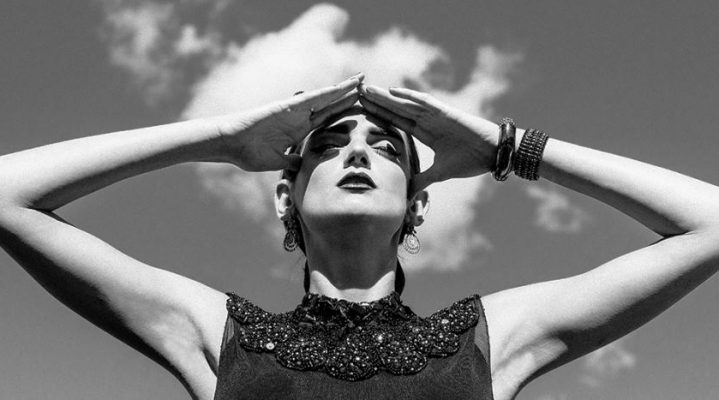In the ever-evolving fashion world, black and white photography holds a unique and timeless allure. Stripped of color, these images reveal a deeper, more intricate layer of artistry, emphasizing texture, form, and emotion in ways that color photography often cannot.
The stark contrasts and subtle gradations of monochrome imagery draw the viewer’s eye to the garments’ craftsmanship, the models’ elegance, and the sophisticated play of light and shadow. From the early works of Edward Steichen to the contemporary masterpieces of Peter Lindbergh, black and white fashion photography has continually evolved, reflecting and shaping fashion trends across decades.
This article explores black and white fashion photography’s enduring appeal and artistry, delving into its historical roots, technical intricacies, and ongoing influence in the fashion industry. Join us as we journey through the monochrome lens, uncovering the timeless beauty and creativity that define this captivating art form.
What Is the History of Black and White Fashion Photography?
Early Beginnings
The origins of black and white fashion photography can be traced back to the early 20th century, marked by the rise of fashion magazines and the burgeoning fashion industry. Notable photographers like Edward Steichen and Horst P. Horst began experimenting with light, shadow, and composition, creating iconic images that captured the elegance of fashion in a monochrome palette. These early pioneers set the stage for what would become a significant movement in fashion photography.
The Golden Age
The mid-20th century is often considered the golden age of black and white fashion photography. During this time, photographers like Richard Avedon and Irving Penn revolutionized the genre with their innovative techniques and artistic vision. Avedon’s dynamic, emotion-filled images and Penn’s meticulous compositions and stark contrasts brought a new level of sophistication to fashion photography.
Their work was prominently featured in leading fashion magazines such as Vogue and Harper’s Bazaar, cementing black and white photography as a powerful medium in fashion. Today’s professional fashion photographer often uses black and white to emphasize the dramatic elements of fashion, making each shot a work of art.
What Is Important in Black and White Fashion Photography?
Emphasizing Texture and Form
One of the key aspects of black and white photography is its ability to emphasize texture and form without the distraction of color. In fashion photography, this means that the intricate details of fabrics, the structure of garments, and the play of light and shadow on different materials are brought to the forefront. This focus on texture and form allows for a deeper appreciation of the craftsmanship involved in fashion design.
Creating Mood and Atmosphere
Black and white photography has a unique ability to convey mood and atmosphere, often evoking a sense of drama, mystery, or nostalgia. In fashion, this can translate to a more emotional and impactful representation of the clothing and the models. The use of high contrast, soft focus, or grainy textures can all contribute to the overall mood of a photograph, making the images more memorable and engaging.
What Are the Technical Considerations in Black and White Fashion Photography?
Lighting Techniques
Lighting is crucial in black and white photography, as it directly affects the tonal range and contrast of the image. Photographers often use dramatic lighting setups to create striking shadows and highlights, adding depth and dimension to their images. Techniques such as chiaroscuro, where light and dark are contrasted sharply, are commonly employed to enhance the visual impact of the photographs.
Film vs. Digital
The debate between digital and film photography is particularly relevant in the context of black and white photography. The film has a distinctive grain and tonal quality that many photographers and enthusiasts believe adds a unique character to the images. However, digital photography offers greater flexibility in post-processing and allows for precise control over contrast, exposure, and other elements. Both mediums have their merits, and many contemporary photographers continue to explore both options in their work.
Why Is Black and White Fashion Photography Still Popular?
The Revival of Monochrome Aesthetics
In recent years, there has been a resurgence of interest in black and white fashion photography. This revival can be attributed to a desire to return to the timeless elegance and simplicity that monochrome images offer. Contemporary photographers like Peter Lindbergh and Steven Meisel have embraced black and white photography, creating stunning editorials and campaigns that stand out in a sea of color imagery. Their work demonstrates that the monochrome medium remains relevant and powerful in modern fashion.
Influencing Fashion Design
Black and white photography not only captures fashion but also influences it. Designers often draw inspiration from monochrome images, incorporating stark contrasts and textures into their collections. The interplay of light and shadow seen in black and white photography can inspire new approaches to fabric manipulation, garment construction, and overall design aesthetics.
What Is the Future of Black and White Fashion Photography?
Technological Advancements
As technology continues to evolve, so too does the potential for innovation in black and white fashion photography. Advances in camera technology, editing software, and printing techniques allow photographers to push the boundaries of what is possible in monochrome imagery. This opens up new creative possibilities and ensures that black and white photography will continue to evolve and remain a vital part of the fashion industry.
Embracing Diversity and Inclusivity
The future of black and white fashion photography also lies in its ability to embrace diversity and inclusivity. By capturing a wide range of models, styles, and perspectives, photographers can use the monochrome medium to tell more inclusive and representative stories. This not only enriches the art form but also contributes to a more diverse and inclusive fashion industry.
In conclusion, the enduring appeal and artistry of black and white fashion photography lie in its timeless ability to emphasize texture, form, and emotion. This unique medium continues to influence and shape the fashion industry, offering a sophisticated and powerful alternative to color photography. As technology advances and the industry becomes more inclusive, black and white fashion photography will undoubtedly continue to captivate and inspire future generations.


